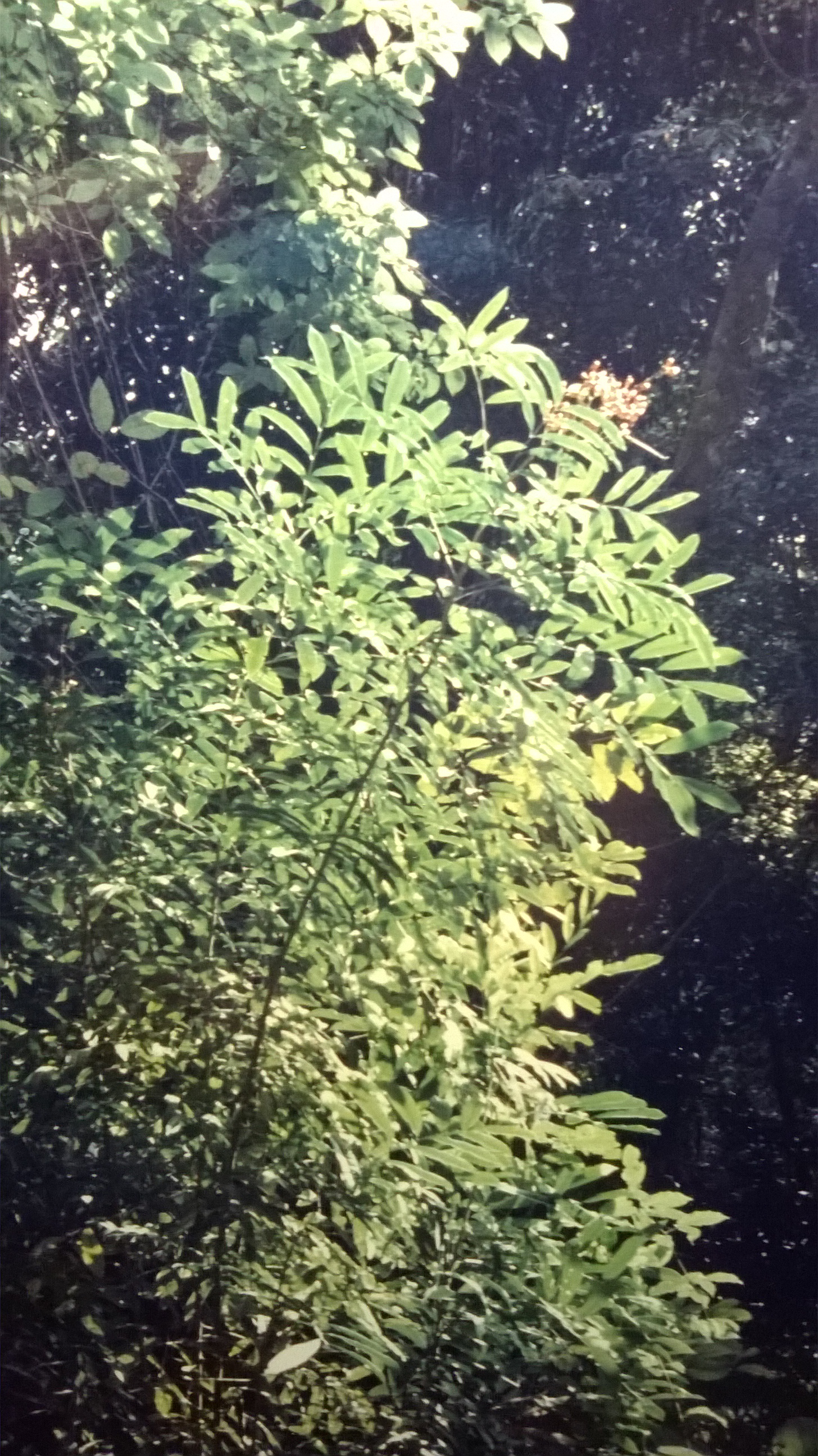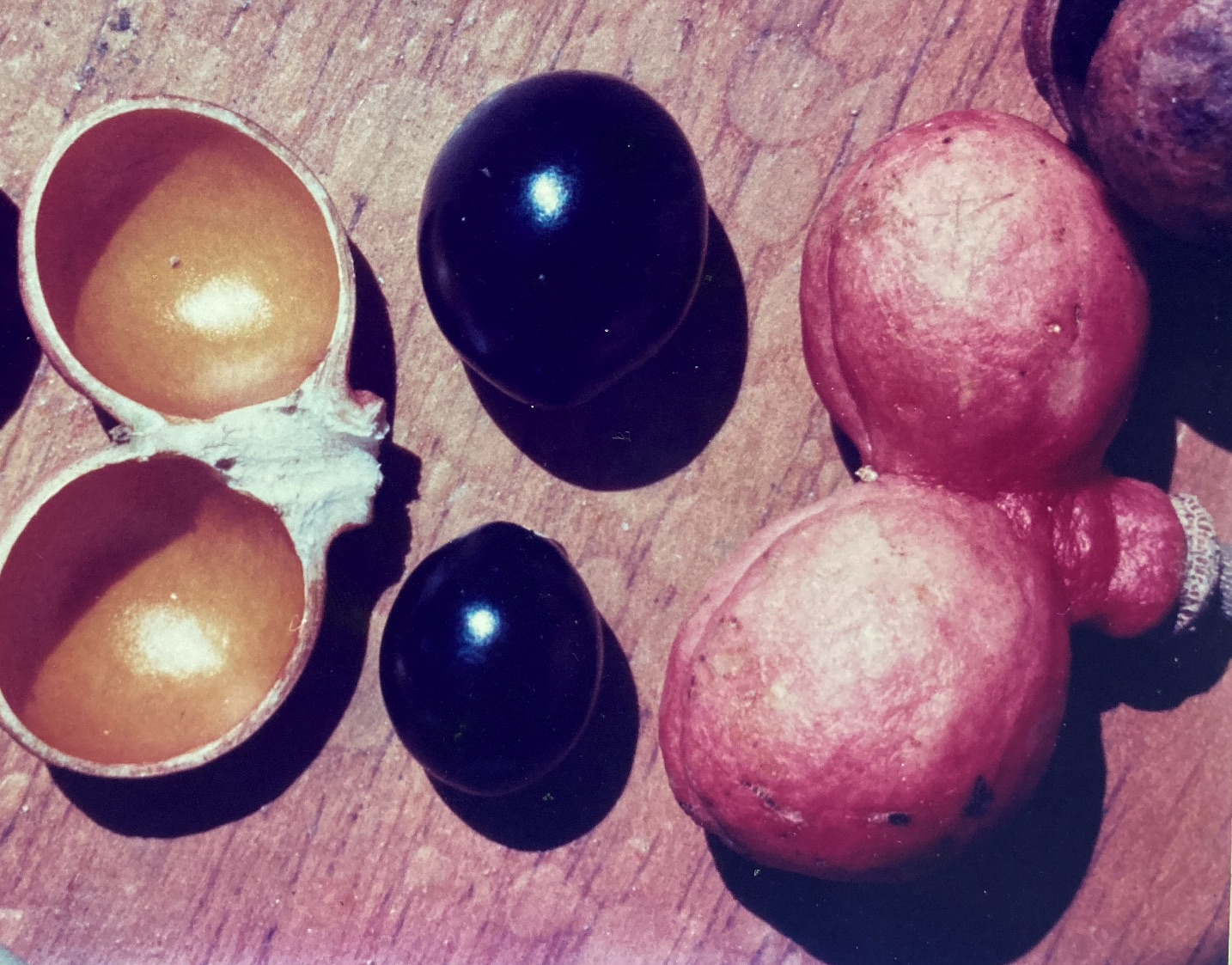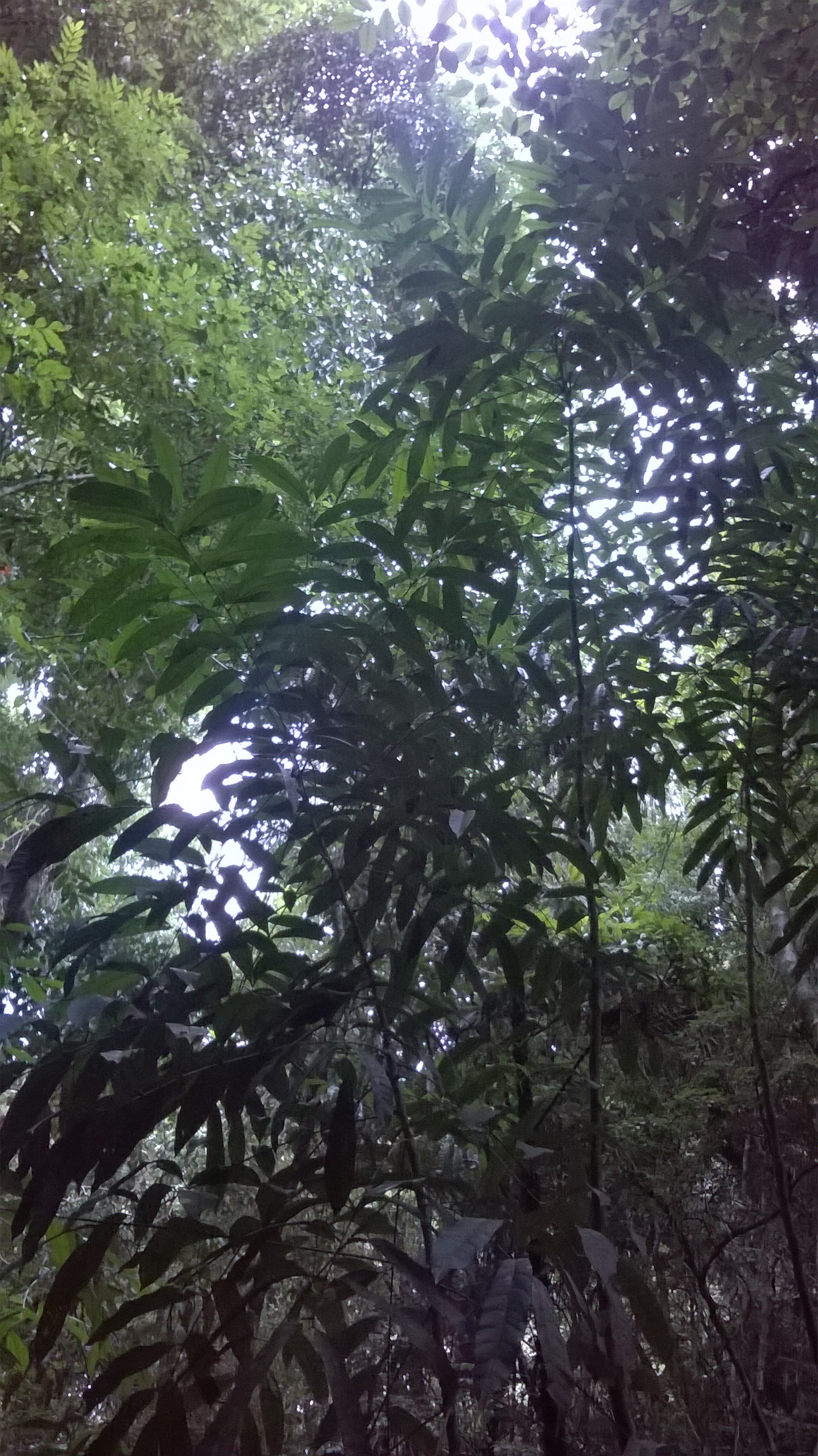Pseudima costaricense L. O. Williams & P. H. Allen
Rare, evergreen, understory treelet (4-6 m) known only from one small creek-side population numbering about ten individuals in Punta Catedral, Manuel Antonio National Park. Previously recorded only from the hills behind Palmar Norte, Pseudima is endemic to Costa Rica and would appear to be on the verge of extinction. This small tree becomes a noticeable component of the primary forest understory when bearing the large, pink capsular fruits that are its hallmark.
Description: Pseudima is a shrub-sized treelet, with a trunk diameter of only 3-4 cm. Formed by a branchless, monopodial stem that is foliated along its entire length, the Pseudima crown is narrow and moderately thick. Leaves (60 cm by 30 cm) are alternate, pinnately compound, and very long. Each is composed of about ten, very narrow leaflets (21 cm by 4 cm) alternately arranged – and widely spaced – along the petiole. Leaflets possess well-developed drip-tips. Petioles and leaf veins sport an outstanding and unusual, yellow-tan color. New growth begins in May and continues for two months, with new foliage generated only at the top of the crown. Leaf production appears to be greatest in alternate years, when trees are not fertile.
Flowers grow from large, thick-stemmed, terminal panicles (25 cm) that are observed only at the tree’s apex. Each of the abundant, white, 8 mm long blossoms has a wide, green calyx made up of five thick, scale-like sepals; five white, forward-thrusted petals that never “open”; five yellow-anthered, free stamens seen protruding from the end of the corolla; and a single, central pistil. The entire structure forms a roughly conical shape. Usually, Pseudima trees follow a two-year fertility cycle, in which flowers occur only in alternate seasons. Nevertheless, individuals are not in phase in this cycle, and fertility is observable annually. Flowering periods are extended events, beginning in August and lasting through October or, sometimes, November. Fruits begin to develop immediately after pollination, as pairs of fused, spherical capsules rapidly expand from the old flower pedestals. Reaching full size within two months and turning a bright reddish or pink color, each spherical fruit measures 3.5 cm in diameter. So many large capsules eventually accumulate at the tops of these thin trees that their crowns are often doubled over by the excessive load. When ripe, each fruit splits longitudinally, revealing a naked, spherical, glossy-black seed (1.5 cm) perched inside. Adding to the visual spectacle, the inner capsule surface sports an attractive golden-orange color and contrasting satiny texture. Harvests (if defined to be when the capsules open) occur from November through early January. However, open fruits and seeds persist in the trees – held high in their canopies – for some time after this. Indeed, some seeds are still present until just before the next round of reproduction begins, as late at the following July.
Similar Species: Talisia nervosa is another small, monopodial tree with large, compound leaves and it belongs to the same family as Pseudima. Talisia is a much more common species, in fact it is nearly ubiquitous in all of Manuel Antonio National Park’s primary forests. This treelet’s leaflets are much wider (6 cm) and rounder than the narrow, finger-like blades of Pseudima and its petioles and veins lack the yellow tinge noted in the latter. Furthermore, Talisia‘s leaflets are attached to the rachis by thickened, short (0.5 cm) petioles, while Pseudima‘s are thin and longer (1.5 cm).
Natural History: Only slightly perfumy, Pseudima flowers are nevertheless heavily visited by all kinds of bees, wasps, flies, and butterflies. Pseudima fruits, with their bright colors and prone position (high in the canopy) would seem poised for dispersal by color-sighted primate mammals or birds. Paradoxically, the capsules are dry and they offer no edible compensation for such service. Several years of observations have shown that, after opening, the fruits persist in the trees for many months before finally falling to the ground beneath the trees.
As has been noted elsewhere (see the species account for Ardilla) it is possible that Pseudima is mimicking the brightly colored arils of other species, and is able to achieve seed dispersal without actually having to produce these energetically costly structures. Under such a scenario, Pseudima lures potential dispersers with its gaudily colored capsules. Every now and then, an animal is tricked into snatching a seed and carrying it a short distance – before ultimately recognizing the ploy and discarding the seed in a new location. If this ruse succeeds occasionally, Pseudima benefits from an energy-efficient means of seed dispersal. By using the signals that would otherwise indicate the presence of fleshy fruits or edible arils, Pseudima achieves its end without actually having to invest the resources necessary to make such structures.
Distribution: This species is known only from Manuel Antonio’s Punta Catedral, where about ten trees are scattered along a 30 meter stretch of stream bank near an intermittent waterfall at the start of the loop trail. Here they grow, almost unnoticed, in a shady corner of the primary forest. Stream banks may be the usual habitat of this species: Allen (1956) reports that the Palmar trees were found in similar places. This endemic and rare species is one of the most important harbored by Manuel Antonio National Park – possibly the last stronghold for this critically endangered treelet.



